Did you know that one of the most iconic Renaissance paintings of all time was painted onto a ceiling?
In this post, you can learn all about it and discover the ultimate list of facts about the Creation Of Adam.
1. What does the Creation of Adam depict?
The Creation of Adam is a painting/fresco that depicts one of the most important moments in the Bible. It shows how God gives life to the first man, Adam, as explained in the Book of Genesis.
The most prominent and recognized element of the painting is the near-touching of the hands of Adam and God,
2. Who painted the Creation of Adam
The Creation of Adam was painted by one of the most talented artists to have ever walked the earth, Italian polymath Michelangelo di Lodovico Buonarroti Simoni, simply known as Michelangelo (March 6, 1475 – February 18, 1564).
While he is mostly known as a sculptor for works like “The Statue of David” and “Madonna With Child,” (along with multiple more works of art) he was also a prolific painter, architect, and poet.
His talent was only contended by another “Renaissance Man,” who remarkably lived in the same period as Michelangelo, Leonardo da Vinci.
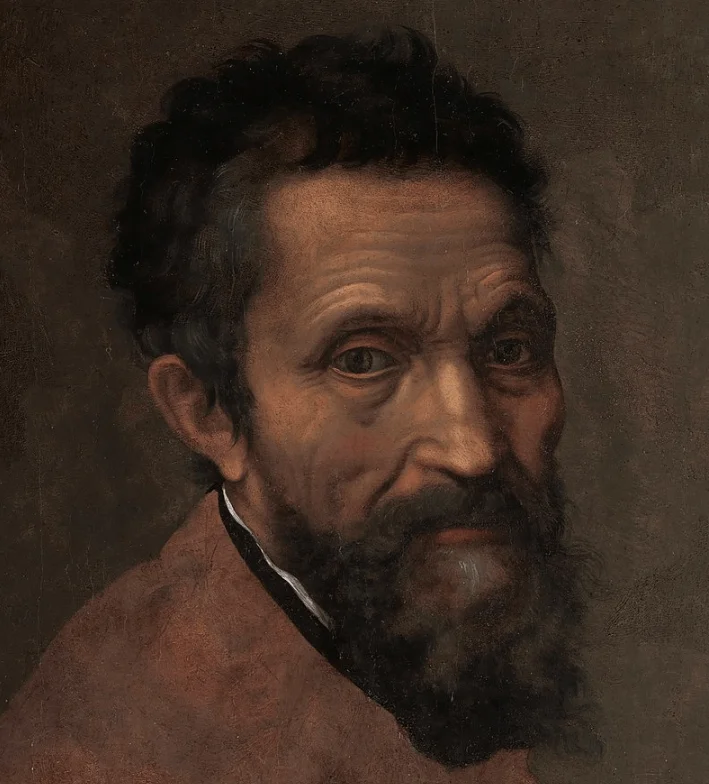
3. It’s part of a much larger fresco
The Creation of Adam is only one part of an enormous fresco that depicts multiple Biblical stories.
These stories include the Creation, the Fall of Man, the Promise of Salvation through the prophets, and the genealogy of Christ.
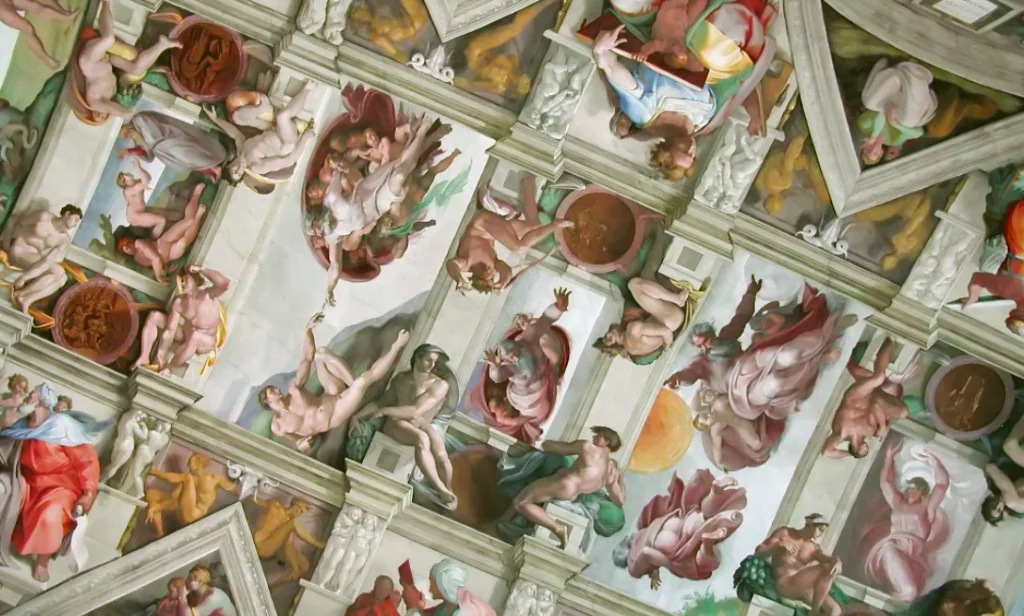
4. Where is the Creation of Adam Located?
One of the most interesting facts about the Creation of Adam is that it was painted onto the ceiling of a chapel.
This chapel is one of the most famous chapels in the world, the Sistine Chapel in the Vatican, which is part of the Vatican Museums, one of the most renowned museums in the world with countless amazing paintings on display.
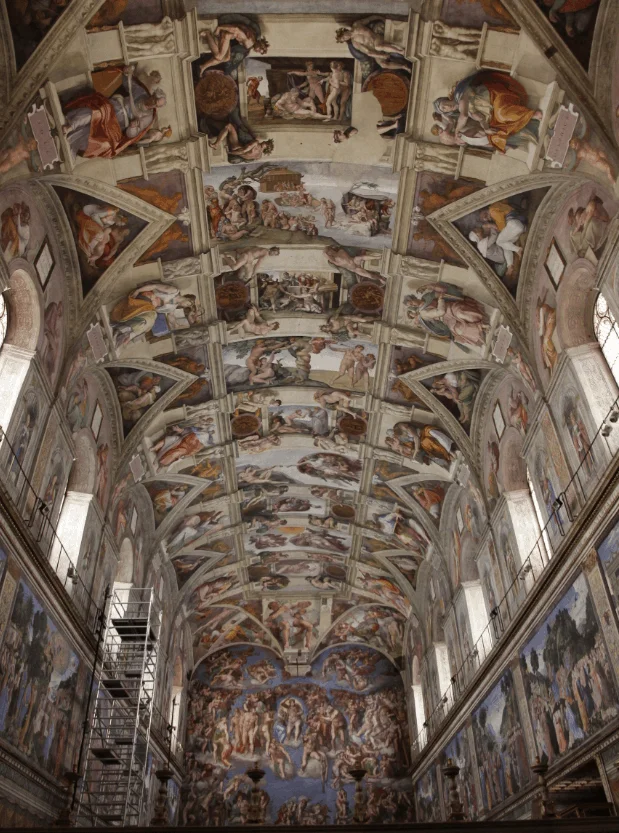
5. The original commission was much simpler
One of the most intriguing facts about The Creation of Adam is that Michelangelo really had the opportunity to do his own thing.
The original commission by Pope Julius II was to paint the Twelve Apostles on the triangular pendentives that support the ceiling. The ceiling itself was supposed to have ornaments compatible with the paintings of the Twelve Apostles.
Somehow, Michelangelo was able to convince the Pope to create a much more complex version of what he initially had in mind, which resulted in one of the most amazing frescos in the world.
6. There’s more to the Sistine Chapel than its ceiling
Alright, so the Creation of Adam is part of a much larger fresco that contains depictions of multiple Biblical stories, all located on the Sistine Chapel ceiling.
But that’s not all!
The Sistine Chapel walls are full of similar depictions as well, including another one of the most famous paintings of Michelangelo, “The Last Judgement.”
This painting is located on the altar wall of the Sistine Chapel and is one of the multiple other stories. These stories represent just about all of the doctrines of the Catholic Church.

7. When was the Creation of Adam painted?
Michelangelo started painting in 1508, and it took approximately 4 years to complete the entire ceiling in 1512.
8. Spending 4 years on a painting was pretty normal
It was pretty much common for a painting to take several years to be completed if completed at all. After all, this was the High Renaissance and artists were in high demand.
Another example of a famous fresco, Leonardo da Vinci’s “Last Supper Painting,” is believed to have been painted in a similar time-frame, even though it is much smaller (and he was a notoriously slow painter).
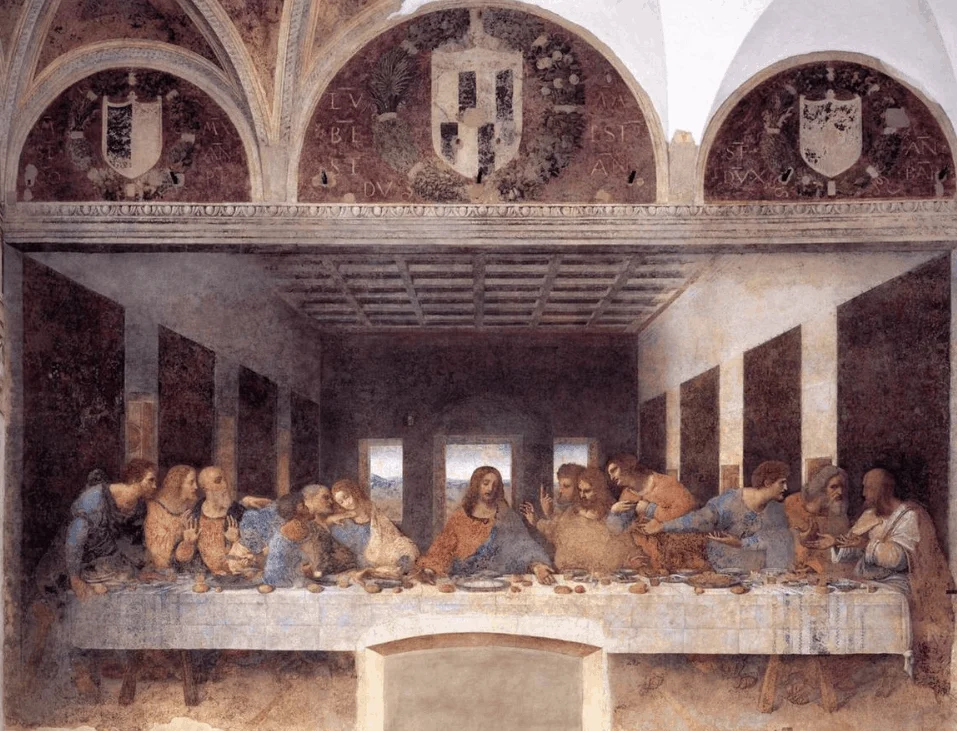
9. It’s one of the most replicated religious paintings in the world
While we bring up The Last Supper by Leonardo da Vinci, it’s worth mentioning that both the painting above and the Creation of Adam are some of the most replicated religious paintings in the world.
This is what made the near-touching of the finger of God and Adam world-famous as it has been replicated endlessly and has been used in countless parodies.

10. Michelangelo didn’t come to Rome for this painting
Even though Michelangelo only started the painting in 1508, he already came to Rome in 1505, because he had received a completely different commission from Pope Julius II.
The idea was to create the Pope’s tomb and decorate it with 40 sculptures, a massive undertaking that would keep Michelangelo occupied for the next 40 years while never really completing it.
The statues that he did complete are considered to be masterpieces such as the sculpture of Moses, even though Michelangelo himself was never really satisfied with the fact that this work remained unfinished.
This tomb can be found in the “San Pietro in Vincoli” (San Pietro in Chains) church, a minor basilica, in Rome.
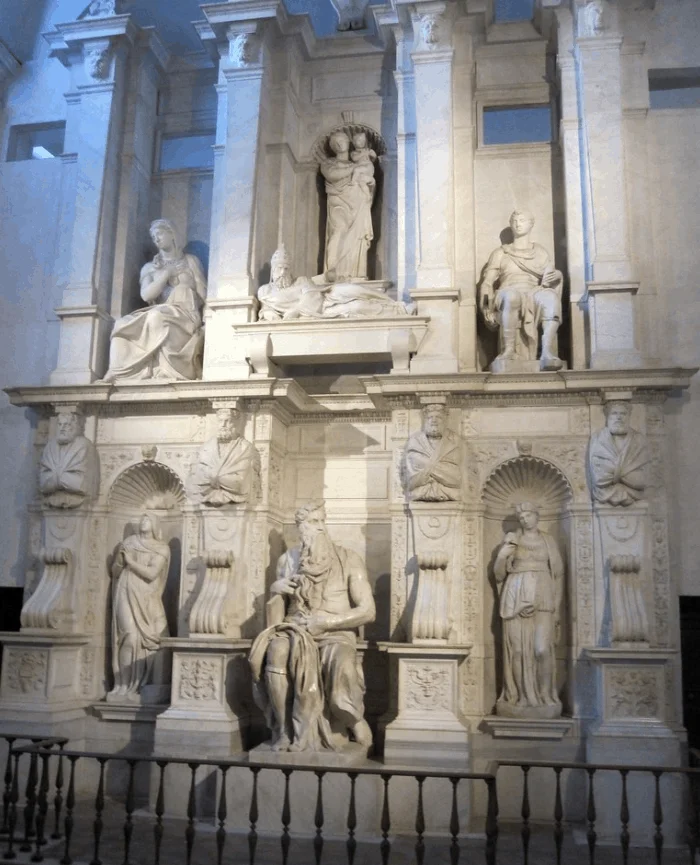
11. Was he tricked by another artist in Rome?
Michelangelo’s arrival in Rome wasn’t to the liking of some of his rivals. one of those was architect “Donato Bramante,” an architect who was working on the construction of St. Peter’s Basilica.
According to Michelangelo’s biographer and mediocre artist Ascanio Condivi, Bramante especially disliked the fact that Michelangelo was commissioned with the Pope’s tomb.
For this reason, he tried to convince the Pope to give him other tasks that weren’t particularly in his line of expertise (without realizing that such a thing didn’t exist, after all, Michelangelo was a true polymath).
Could this be the reason Michelangelo was given various other tasks, including the Sistine Chapel Ceiling, and was therefore not able to finish his work on the tomb?
If so, a masterpiece has resulted out of the jealousy of his rival who thought Michelangelo wasn’t up to the job!
12. The Creation of Adam is in the center of the ceiling
The center of the ceiling consists of 9 stories from the book of Genesis that are divided into 3 main groups:
- God’s Creation of the Earth.
- God’s Creation of Humankind.
- Humankind’s fall from God’s grace.
The painting is depicted in the second group of stories. Other paintings include “Adam and Eve in the Garden of Eden,” the “Deluge,” the “Prophet Jeremiah,” and the “Cumaean Sibyl.”
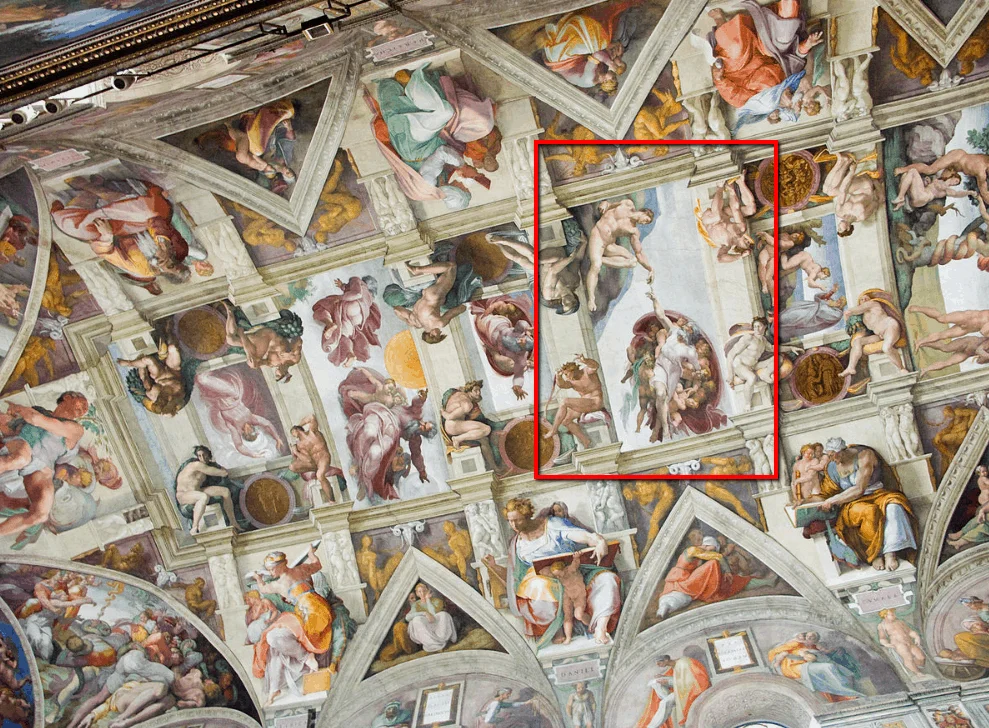
13. The painting is huge
The Creation of Adam is just a small part of a huge painting that covers over 500 square meters (5,381 sq ft) of the ceiling of the Sistine Chapel.
This amazing work of art also consists of 300 figures, portraying the vast majority of stories told in the Bible.
14. Was this the inspiration for Adam?
Many historians believe that the inspiration for the depicting of Adam is a cameo (relief image) of a nude Augustus Caesar, one of the most famous Roman Emperors in history, riding sidesaddle on a Capricorn.
One of the most remarkable facts about the Creation of Adam is that this cameo can now be admired in Alnwick Castle in Northumberland.
The fact that a friend of Michelangelo, cardinal Domenico Grimani, owned the cameo and lived in Rome while he was painting the ceiling could explain the reason how he got his inspiration from it.

15. God is depicted as an elderly white man
The excerpt in the book of Genesis that depicts the creation of man is thought to be “God created man in His own image, in the image of God He created him.”
God is a white, Caucasian elderly man who creates man in his own image. he stretches out his right arm in order to give the gift of life.
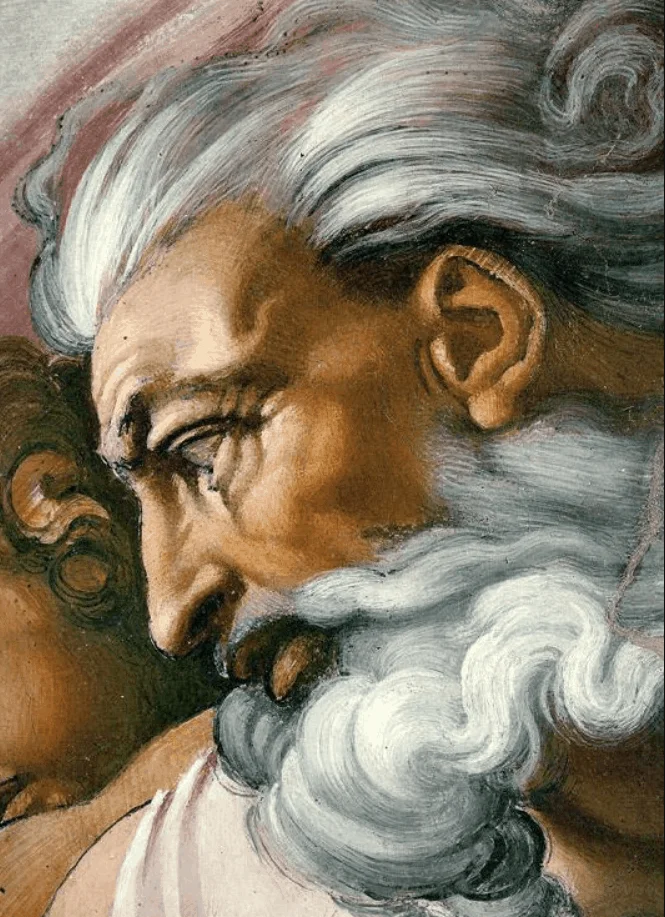
16. There’s something about the people behind God
As you can see, there are 12 figures of people behind God in the painting. Frank Meshberger, an Indiana-based physician discovered in 1990 that the figures have the exact shape of the human brain.
We also know that Michelangelo had excellent knowledge of every part of the human body, including the brain.
17. Could the scene be a metaphor for the real birth of man?
It has also been observed that the red cloth around God has the exact shape of the human uterus.
This made historians and scientists conclude that the painting is actually a metaphor for the real birth-giving process of a human being.
The green cloth hanging down would then represent a newly cut umbilical cord, which strengthens the theory that Michelangelo wanted to give the painting a double meaning.
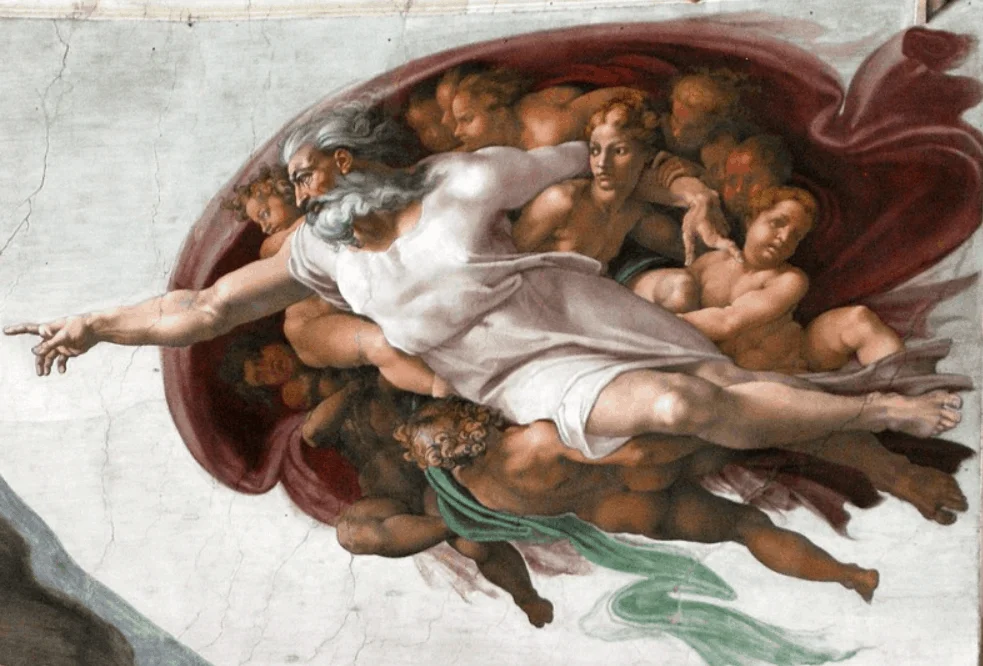
18. Did Michelangelo paint Eve’s rib?
Michelangelo’s excellent knowledge of the anatomy of the human body allowed him to add a hidden message.
It has been discovered that Adam actually has an extra, concealed rib, which would then represent the rib of Eve.
he did so, however, in such a way that Adam and Eve would be created side-by-side, which is contradicting the exact version of the Biblical story, in which Eve is created after Adam.
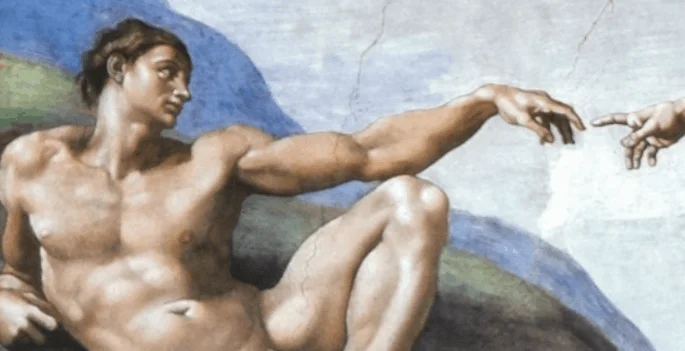
Quick facts about the Creation of Adam
19. Michelangelo reluctantly accepted the commission for the painting of the Sistine Chapel Ceiling. he considered himself to be a sculptor and not a painter.
20. After about a year of working on the ceiling, he started feeling the physical strain of this complicated task. He even wrote a poem about his trouble which mentions “I’ve already grown a goiter from this torture.”
21. He didn’t actually paint the ceiling in a normal position. he actually painted it while being able to lie down. he did create a specific type of scaffolding though in order to make it more comfortable.
22. One of the most amazing facts about the Creation of Adam is that with all the scaffolding in place, Michelangelo wasn’t able to actually see the painting for the entire 4 years that he worked on it. Only when it was completed he was able to see his finished work.
23. What was the last figure that Michelangelo painted on the entire ceiling? The image of God, as he wanted to make it look absolutely perfect.
24. In order to get such a clear understanding of the anatomy of human bodies, Michelangelo is known to have dissected a lot of cadavers in his career. This allowed him to perfect his paintings of the human body.
25. the first step in creating this immense painting was making numerous sketches of all the figures he wanted to portray. These sketches reveal the true genius of Michelangelo as well!
26. While the entire Sistine Chapel Ceiling consists of over 500 square meters of art, the Creation of Adam measures only 280 cm × 570 cm (9 ft 2 in × 18 ft 8 in).
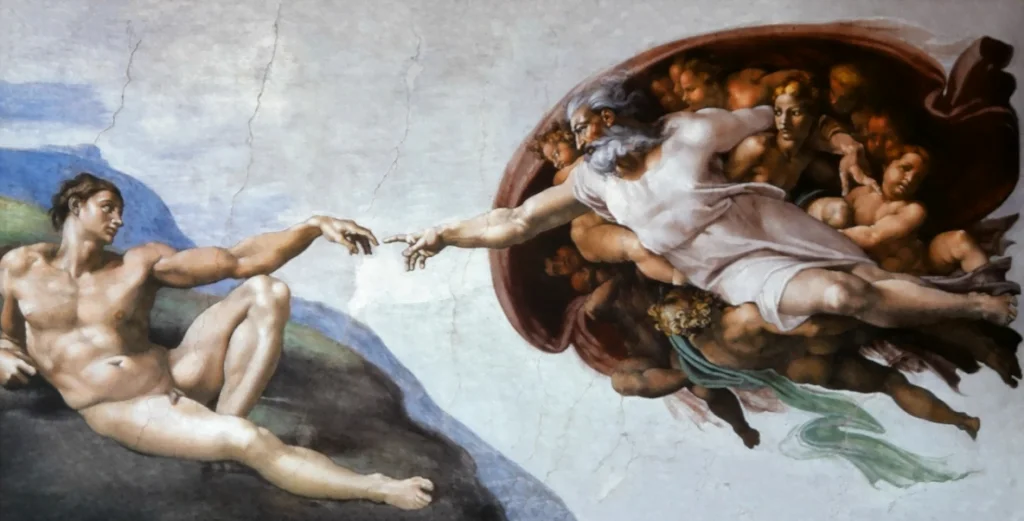



Leave a comment
You must be logged in to post a comment.